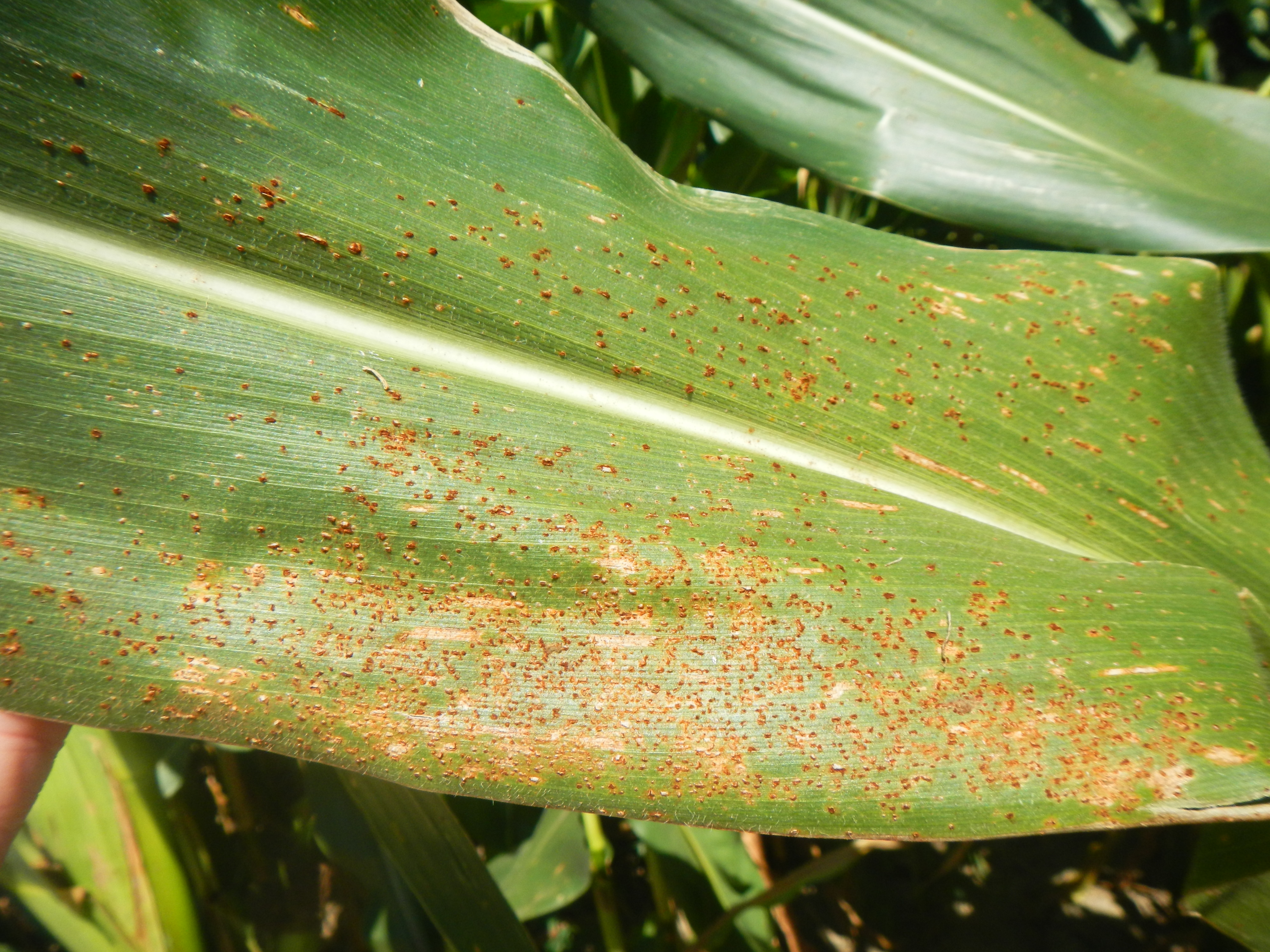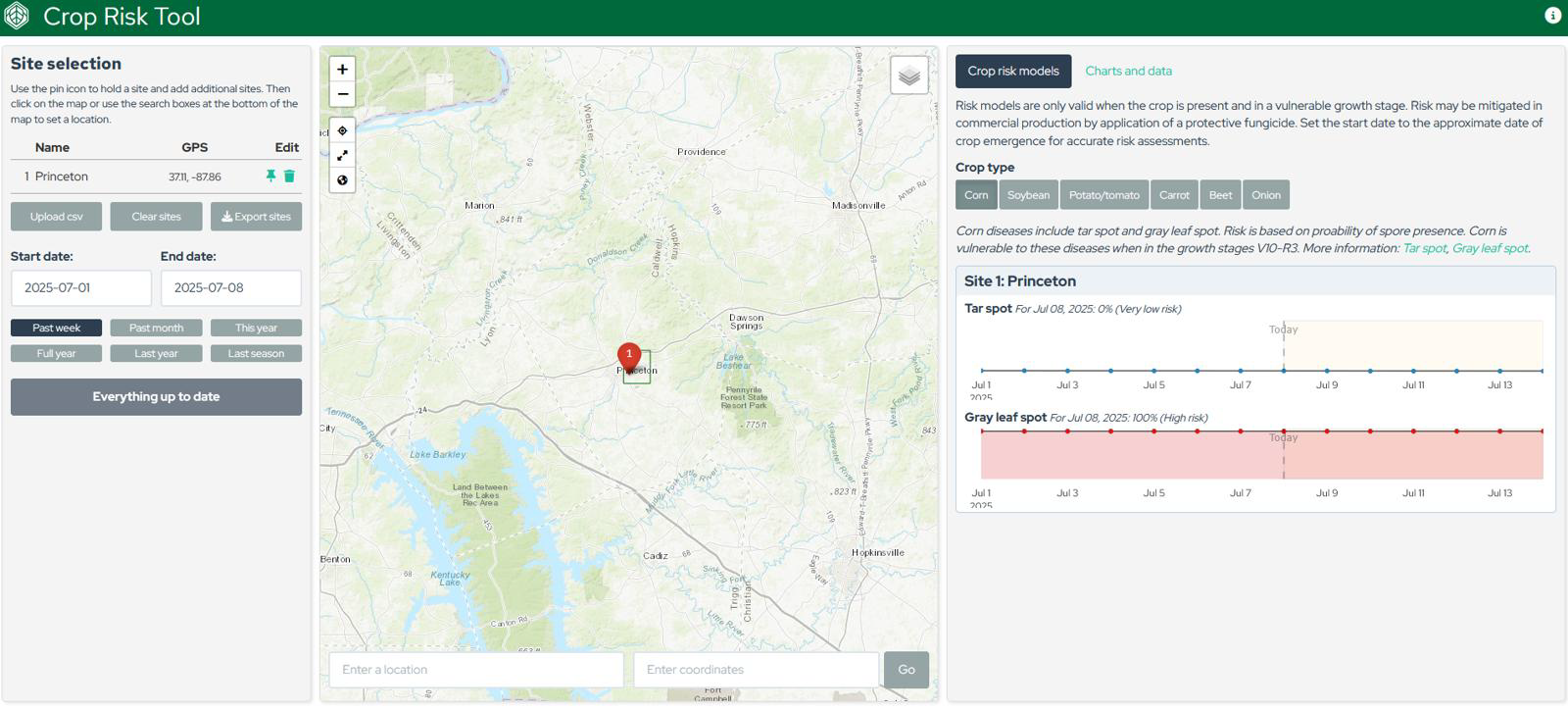Tracking Important Corn Diseases
Tracking Important Corn Diseases

On July 10, southern rust was confirmed in Crittenden County at low levels. Southern rust typically arrives in Kentucky in mid-July, and whether a fungicide will be needed to manage southern rust will depend on the crop growth stage at the time it is detected in an area. Fungicide applications may be needed to manage southern rust through the milk (R3) growth stage, although if corn receives a fungicide application at VT/R1, it is less likely to need additional applications if southern rust arrives after VT/R1. Southern rust can be tracked on a map on the Crop Protection Network. On the map, red counties/parishes indicate that southern rust has been confirmed by university/Extension personnel.
Tar spot has been found across the Midwest but not yet confirmed in Kentucky. Even if tar spot is detected in the state, we would not expect the disease to develop quickly, because the risk of disease development is very low, according to the new Crop Risk Tool, which can forecast disease risk for tar spot and gray leaf spot for corn that is between growth stages V10 and R3. Model predictions for multiple areas in western Kentucky for July 6 through July 13 indicate that corn at V10 or later is at very low risk for tar spot development (Figure 1). This is not surprising with the high humidity and high temperatures, which are not conducive for the tar spot fungus. Risk for gray leaf spot development is uniformly high across most of Kentucky. In most cases, applying a foliar fungicide once at tasseling/silking (VT/R1) is the most effective way to prevent yield loss from foliar diseases like tar spot and gray leaf spot and offers the greatest potential for a positive return on investment (ROI).

Figure 1. Example of Crop Risk Tool model prediction for gray leaf spot and tar spot risk for Princeton, KY from July 7-13, 2025.
Tar spot can be easily confused with insect frass, which is plentiful in corn at this time of year. Tar spot lesions are raised and feel bumpy on the leaf surface and often are surrounded by a small brown or tan halo (Fig. 2). Insect frass will not have a halo or margin surrounding the lesion, and should wash off with water. Always submit suspected tar spot samples to your County Agent for submission to the Plant Disease Diagnostic Laboratory for confirmation.

Figure 2. Tar spot lesions (left) and insect frass (right) on corn leaves (Photos: Kiersten Wise).
Citation: Wise, K., 2025. Watching and Waiting for Corn Diseases. Kentucky Field Crops News, Vol 1, Issue 7. University of Kentucky, July 11, 2025.

